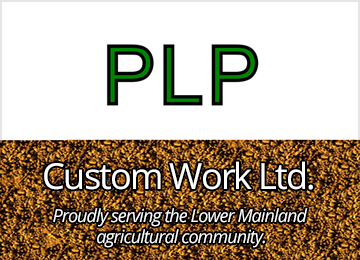Dr. Lenore Newman
Part one: Food Sovereignty, Local Food, and a Healthy Region
What we eat can have a strong impact on our health, and though eating healthily requires education, personal choice, and a healthy economy, it also requires that consumers have access to the best foods being produced. In our region, we are lucky to have a wealth of fresh local options year round, including excellent produce, fresh meat and dairy, and superfoods such as berries. Food theorists call the ability to make choices about one’s food system, “food sovereignty”; having access to a range of products, and special niches such as organic or gluten-free products allows individuals to make the choice to eat healthily. Whether a person is following a complicated nutrition plan or simply taking grandma’s advice to eat more vegetables, local producers can be a key part of preventative health care through nutrition.
The sale of dried bulk berries, smoked salmon, bulk grain-fed meats, and dried seaweed can be available at the click of a button.
Here in the Lower Mainland, farmers’ markets are a popular way for consumers to have access to the best of the season, and can work well for smaller operations. For the busy farmer, larger farm stores can be a better option where people can stock up on healthy products in bulk. One element we do not really have yet in BC is functional food hubs. In the US food hubs, which can combine commercial kitchens, aggregation of small lots, and public market spaces, have emerged as a way for farmers to work with small processors to turn excess production into a value-added product. Here in the Lower Mainland several such projects are moving forward; hopefully a large scale food hub capable of bringing value to industrial producers will emerge in the Fraser Valley.
A healthy food system includes every step of the food chain, from raw product sales, to local processing into value added products, to support for a restaurant sector offering the finest foods of the region. Long distance travel is hard on nutrients, and requires heavier processing and chemical modification to keep food edible over thousands of kilometers. Farmers can increasingly tap lucrative markets on the internet while offering customers healthy food choices.
Examples as diverse as the sale of dried bulk berries, smoked salmon, bulk grain-fed meats, and dried seaweed can be available at the click of a button.
Though a strong local food system can be a critical factor in promoting health, it is only possible with a solid land base available for farming. In this respect, British Columbia’s Agricultural Land Reserve can be seen as a necessary part of the health system. The ALR has done an excellent job of ensuring that fresh and local farm goods are available; despite the pressures from a rapidly growing population, only a little over ten percent of Lower Mainland farmland has been lost over the last forty years. The stability of the farmland base has allowed farmers to invest in their operations and maintain an industrial farm base that could make British Columbia a nutraceutical powerhouse. Blueberries remain a wondrous source of anti-oxidants, and researchers at the University of the Fraser Valley are exploring new crops such as Haskap and Sea Buckthorn berries. But these innovations will only thrive with available, accessible farmland, and with a successful and supported farm workforce.
Once the space is found to produce the food—be it a field a greenhouse, a barn, a bioreactor, or an aquaponics system—then feeding of the plants must be considered. There are arguments for and against fertilizer (out of the bag vs. compost or manure). The fact is plants can’t tell the difference. Plants take up nutrients in simple forms only—the most basic either source provides.
Plants can’t tell whether the CO2 is produced naturally or artificially. Compost and manure also introduces organic matter to replenish the soil, adding to the soil health and water and nutrient holding capacity.
Once the plants are growing, so are insects and diseases. Everyone knows a healthy plant is less likely to succumb to diseases and pests than a sick plant. So by using the appropriate varieties, crop rotation and keeping soil health up, we can help the plants and their root systems stay healthy. In particular, the coastal regions utilize raised beds and drainage pipes to help plant roots, starved for oxygen during the rainy season from September to June, escape drowning.
On the other hand, during the drier months from July until early September, fields usually need irrigation.
There are many options today for conventional growers (less for organic growers) to control diseases or pests. Some farmers use constant tilling as weed control. This leads to compaction of soil, as the macro pores in the soil are beaten out. Over winter, after a two day rainfall, you can see evidence of this by the forming of large lakes where before there were none. Herbicides cut down on excess tillage as well as cover large areas. A combination of physical and chemical controls may just do the trick; even organic farmers use chemicals like vinegar. Burning weeds defeats the goal of energy efficiency as it uses fuel energy to create the burn.
Food sovereignty starts with us making wise decisions about where and how our food is grown.
Healthy farmland enables food sovereignty, and will lead to healthier food and better social health overall.












